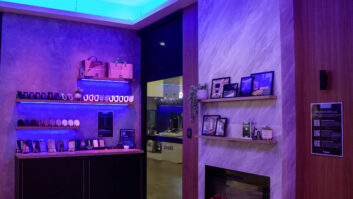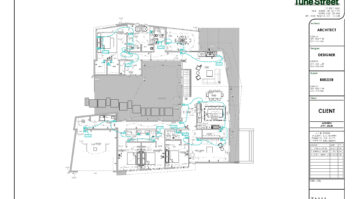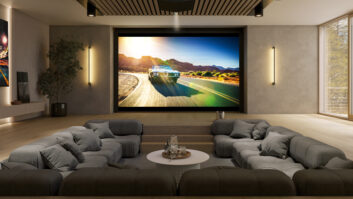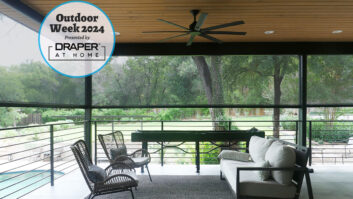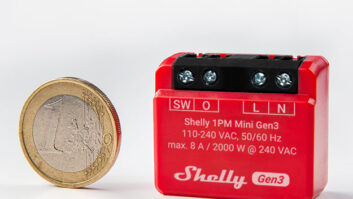During this year’s Spring Break with our high school children, we took a 10-day vacation through the southern part of Spain. What made this trip unique from previous vacations was the impact that technology had on our overall enjoyment. The same digital entertainment, communication, and control solutions that we enjoy in our home (and install for our clients) were extended via portable digital devices that we took with us on the road. To give you a better idea of how we used these technologies, I’ve written the following diary of what a digital trip with our “cyberManor” family is like.
Our Digital Nerve Center: The Laptop.
Our HP laptop was at the center of our digital experiences. On the long flight to Madrid (and back) it served as:
–Host to the DVD movies that we watched on its large 15-inch screen.
–My daughter’s homework station to complete her term paper (which we had wirelessly transferred to the laptop from her bedroom computer before we left on the trip).
–Our repository for music and audio books that would be downloaded nightly to each of our mini iPods. (Content that we had brought with us, transferred to the laptop from our home audio server).
When we were in our apartments in Barcelona and Granada we used our recharged laptop to:
–Download the digital pictures that we took during the day for viewing each evening. It was a great way to recapture and discuss the day’s highlights.
–Be a postcard station. Rather than buying postcards in each city and mailing them so that the recipients would receive them after we returned home, we attached our digital pictures to an e-mail describing our daily events and sent them to friends and family around the world. The one- to two-week lag time normally associated with the receipt of generic postcards now became an instant transfer of our own custom images. It was a great way to let friends and relatives instantly know how our trip was going.
–Listen to the Spanish CDs that we had bought (to set the proper mood!).
–Recharge our mini iPods.
–Check and respond to e-mail (even though our apartments did not have Internet access, there were many local Internet cafes that had wired and/or wireless hot spots that allowed us to upload and download our e-mail).
–Check how my USTA tennis team was doing in our playoff match back in California. Because all of these match results are now posted on the web, I could get daily results of my team’s efforts.
–Control the thermostat and sprinkler system at our home. We use the Homelogic Edge Brick solution that connects a Windows-based control client to our thermostats and irrigation controller over an IP to serial communications brick (for more information on these devices please go to www.homelogic.com). Using our GoToMyPC service, I was able to login into my home computer, launch the HomeLogic thermostat and irrigation control screens to make sure our thermostats had been turned off for the trip and that our yard was getting the appropriate irrigation based on my Yahoo Weather! Reports.
–Check on our beach home over the locally installed Panasonic IP cameras to make sure that we were not getting any uninvited guests using our backyard hot-tub and that the house cleaners had come during the week we were on vacation.
The Portable Travel Extensions–our mini iPods.
Because we decided to bring only one laptop for the whole family, we needed a way to extend its digital entertainment content so that each person could enjoy their content when and how they wanted it. The solution was to use the laptop for video entertainment for the person that wanted to see a movie and distribute the song and audiobook content to the mini iPods owned by my wife and two children. This was the perfect mobile network, connecting the USB mini iPods to the laptop host for content and power recharging at night and removing them during the day for portable enjoyment. An added benefit of the mini iPods is that they served as alarm clocks during our travels (one less thing to take with us for a change) and even the limited games stored on them served as entertainment for our kids, a necessity when you’re on a flight that’s more than 10 hours long.
The Home Media Center.
When we returned home we wirelessly transferred all the audio and video content stored on the laptop from our overseas trip to our family room Microsoft Media Center PC. The photos and sounds of our trip came alive in our family room as we fondly remembered the highlights of one of our most enjoyable trips. Oh, and the term paper my daughter completed on the flight home was transferred to her computer, printed on the network printer, and e-mailed to her instructor the night we returned.
Now that’s a story with a happy digital ending. Afterall, isn’t that the feeling we always want to leave with all of our clients?

